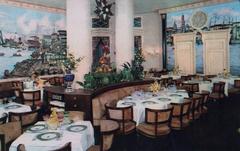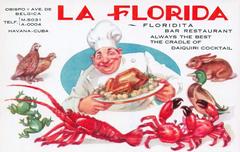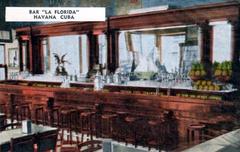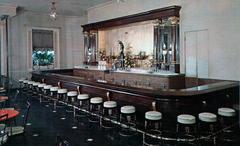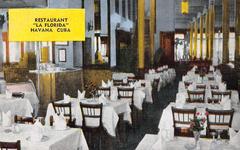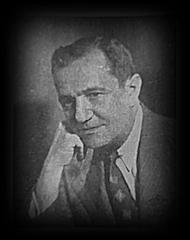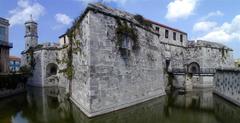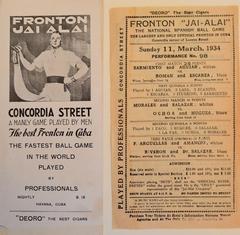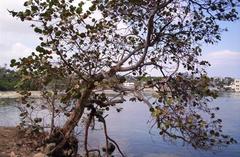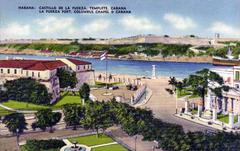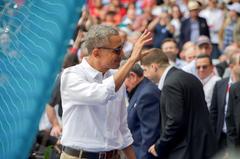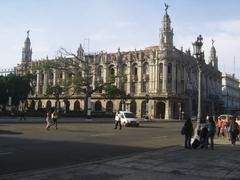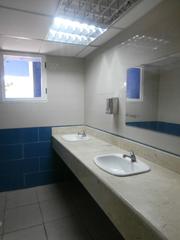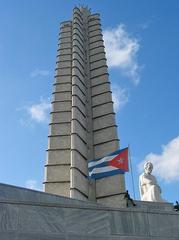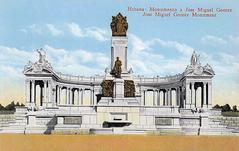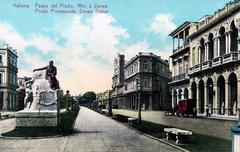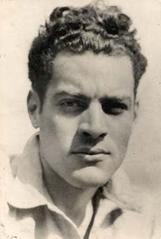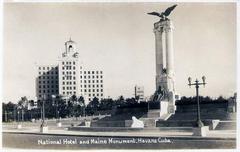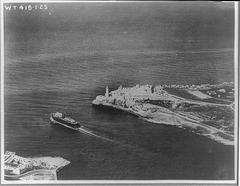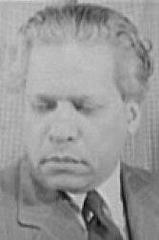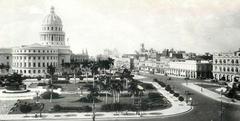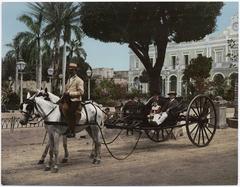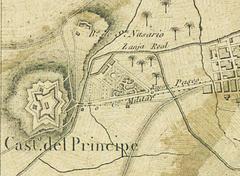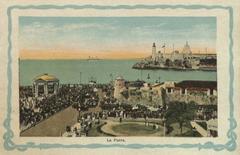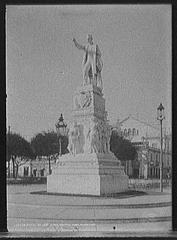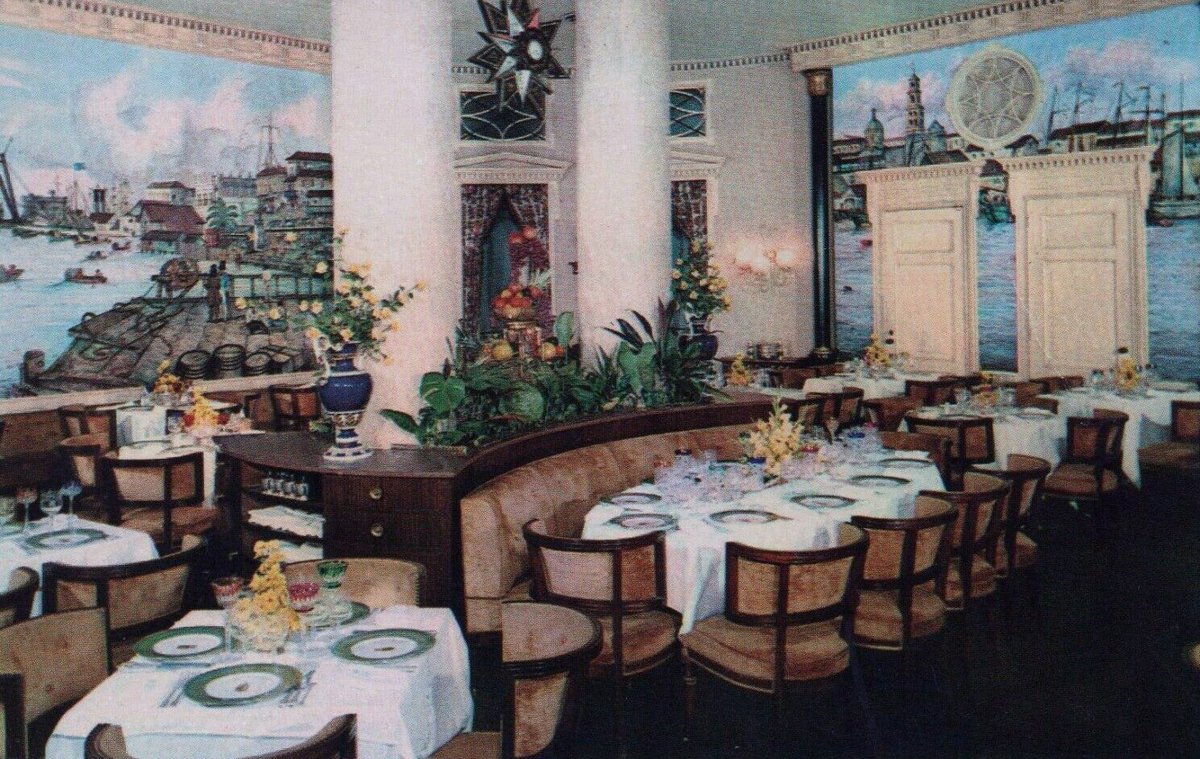
Floridita Havana Province Cuba: Visiting Hours, Tickets, and Travel Guide
Date: 15/06/2025
Introduction: Floridita’s History and Cultural Significance
Floridita, nestled in the heart of Old Havana, is not only one of Cuba’s most iconic bars but also a living testament to Havana’s golden era. Established in 1817 as “La Piña de Plata,” it evolved from a humble bodega into a global cultural landmark, renowned as “La Cuna del Daiquiri” (The Cradle of the Daiquiri). Floridita’s signature frozen daiquiri, vibrant red décor, and lively Cuban music have made it a magnet for locals and international visitors alike. Its history is intertwined with famous patrons like Ernest Hemingway, who immortalized the bar with his presence and praise. Positioned at the corner of Calle Obispo and Monserrate, Floridita is a must-see for any traveler seeking to experience Havana’s rich heritage and cocktail tradition firsthand.
This guide provides a comprehensive overview of Floridita’s historical background, practical visitor information, accessibility, and nearby attractions. It also offers travel tips to help you fully enjoy your visit. For the latest updates, always refer to the Floridita Official Website and the Havana Tourism Official Site. (Floridita Bar Havana Visiting Hours and Historical Overview; El Floridita Visiting Hours, Tickets & Cultural Significance in Havana; Visiting El Floridita in Havana: Hours, History, and Insider Tips; Practical Information for Tourists Visiting Floridita, Havana)
Table of Contents
- Introduction
- Historical Overview
- Visiting Floridita: Essential Information
- Signature Cocktails
- FAQs
- Conclusion
- References
Historical Overview
Early Origins and Founding (1817–Early 20th Century)
Floridita’s story began in 1817 as “La Piña de Plata,” a gathering place for sailors, merchants, and travelers in colonial Havana. Its prime location in Old Havana contributed to its popularity as a cosmopolitan hub. By the early 1900s, with a surge of American tourists during Prohibition, the bar rebranded as “El Florida” to appeal to its growing international clientele.
The Constante Era and the Daiquiri’s Birth
From 1914, Constantino Ribalaigua Vert (“Constante”) transformed Floridita’s cocktail scene. By perfecting the frozen daiquiri in the 1930s, Constante secured Floridita’s reputation as “la cuna del daiquiri.” The bar became a training ground for master bartenders (cantineros) and remains synonymous with expertly crafted rum cocktails.
Hemingway’s Patronage and Global Fame
Ernest Hemingway’s patronage in the 1930s and 1940s cemented Floridita’s international fame. His favorite seat is now marked by a life-sized bronze statue, and his famous maxim—“My mojito at La Bodeguita, my daiquiri at El Floridita”—is commemorated inside. Hemingway’s association transformed Floridita into a literary and cultural pilgrimage site, drawing writers, artists, and celebrities from around the world.
Architectural and Cultural Evolution
Floridita’s interior remains largely unchanged, featuring classic red and gold hues, mahogany bars, and murals depicting Havana’s harbor. The adjoining seafood restaurant and regular live Cuban music performances create an ambiance that evokes the city’s golden age, making each visit a step back in time.
Visiting Floridita: Essential Information
Visiting Hours
Floridita is open daily from 11:00 AM to 1:00 AM, providing ample opportunity for both daytime and late-night visits. (Bar Floridita)
Entry and Reservations
There is no entry fee or ticket required to visit Floridita. The bar operates on a first-come, first-served basis, and reservations are generally not accepted for the bar area. For dining in the adjoining restaurant, reservations are recommended, especially during peak travel seasons.
Accessibility
Floridita is street-level and generally accessible, though peak hours can make entry and movement challenging. There are ramps at the entrance, but the historic layout and crowding may limit mobility inside for some visitors.
Travel Tips
- Best Time to Visit: Early afternoons or weekday mornings are quieter and ideal for relaxed visits.
- Getting There: Located at Obispo 557, corner of Monserrate, Old Havana. Easily reached by foot from Central Park or by taxi.
- Dress Code: Smart-casual attire is encouraged, especially in the evenings.
- Payment: Cuban pesos (CUP) are standard. Carry cash, as card terminals can be unreliable.
- Safety: The area is generally safe, but keep an eye on personal belongings in crowded settings.
- Photography: Feel free to take photos, especially with the Hemingway statue and historic interiors.
Nearby Attractions
Floridita’s central location places it within walking distance of top sites such as:
- Obispo Street (pedestrian shopping and entertainment)
- Plaza de Armas (historic square)
- Museo Nacional de Bellas Artes (art museum)
- La Bodeguita del Medio (famed for mojitos)
Special Events and Tours
Floridita occasionally hosts live music events and cocktail-making demonstrations. Many Old Havana walking tours include a Floridita stop for cocktail tastings and history. Check the Floridita Official Website or local tour operators for updates.
Signature Cocktails
Floridita is celebrated as the birthplace of the frozen daiquiri, perfected by Constante, and famously enjoyed by Hemingway. The “Papa Doble” (Hemingway Daiquiri) features double rum, grapefruit juice, and maraschino liqueur—no sugar, as per Hemingway’s preference. Other Cuban classics like Mojitos and Cuba Libres are also available. Cocktails typically cost $4–$6 USD.
Frequently Asked Questions (FAQ)
Q: What are Floridita’s visiting hours?
A: Open daily from 11:00 AM to 1:00 AM. (Bar Floridita)
Q: Is there an entry fee or ticket required?
A: No, entry is free and open to the public.
Q: Can I make a reservation?
A: Reservations are only accepted for the restaurant, not the bar area.
Q: Is Floridita wheelchair accessible?
A: The entrance is accessible, but crowds and historic interiors may limit movement.
Q: What are the must-try drinks?
A: The classic frozen daiquiri and the Papa Doble (Hemingway Daiquiri).
Q: Are credit cards accepted?
A: Some, but cash is recommended due to unreliable card processing.
Q: Is Floridita safe for solo or LGBTQ+ travelers?
A: Yes, Havana is generally safe and welcoming, though discretion is advised outside tourist zones.
Practical Travel and Entry Information
Entry Requirements
As of June 30, 2025, all tourists must obtain an electronic visa (Evisa) before arriving in Cuba. Apply via the official portal, then register your details and code in the DViajeros platform for immigration clearance. All visitors must also have health insurance covering their stay in Cuba. (Cuba Headlines; Entry Cuba Form)
Currency and Connectivity
Cuban pesos (CUP) are the official currency. ATMs are available but not always reliable; bring cash and exchange at official locations. Wi-Fi is limited; consider a local SIM or Wi-Fi access card for internet needs.
Safety and Health
Havana is considered safe for tourists, but remain aware of your surroundings in busy areas. Healthcare is available for tourists, but you may need to pay upfront and seek reimbursement from your insurer. Carry proof of insurance and emergency numbers. (Entry Cuba Form)
Transportation
Floridita is walkable from Old Havana hotels and close to major taxi routes. Agree on taxi fares in advance, and consider local ride apps such as La Nave.
Responsible Tourism and Local Context
While Floridita is a gleaming symbol of Havana’s cultural past, Old Havana’s neighborhoods can show signs of economic hardship and disrepair. Visitors are urged to be respectful, support local businesses, and engage considerately with the community. (Havana Times)
Summary and Final Recommendations
Floridita remains a vibrant symbol of Havana’s heritage, blending compelling history, classic cocktails, and live Cuban music in an unforgettable atmosphere. Its storied past—marked by legendary bartenders and Hemingway’s legacy—makes every visit a unique cultural experience. Open daily from 11:00 AM to 1:00 AM with no entry fee, Floridita is easily accessible and situated near many of Havana’s top attractions. To make the most of your visit:
- Arrive early or during weekday afternoons for a more relaxed experience.
- Don’t miss the signature frozen daiquiri or the Papa Doble.
- Take time to explore nearby landmarks and absorb the vibrant streets of Old Havana.
For up-to-date information, events, and travel resources, consult the Floridita Official Website, the Havana Tourism Official Site, or download the Audiala app for offline access and insider tips.
A visit to Floridita is not just about a drink—it’s about stepping into Havana’s living legacy. (Floridita Bar Havana Visiting Hours and Historical Overview; El Floridita Visiting Hours, Tickets & Cultural Significance in Havana; Visiting El Floridita in Havana: Hours, History, and Insider Tips; Practical Information for Tourists Visiting Floridita, Havana)
References
- Floridita Bar Havana Visiting Hours and Historical Overview
- El Floridita Visiting Hours, Tickets & Cultural Significance in Havana
- Visiting El Floridita in Havana: Hours, History, and Insider Tips
- Practical Information for Tourists Visiting Floridita, Havana
